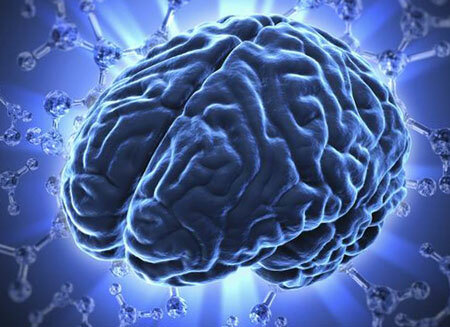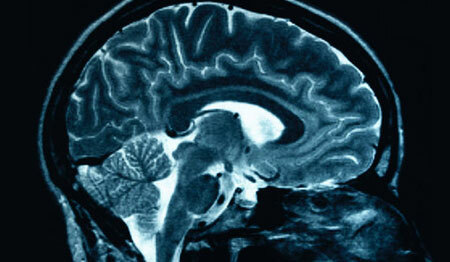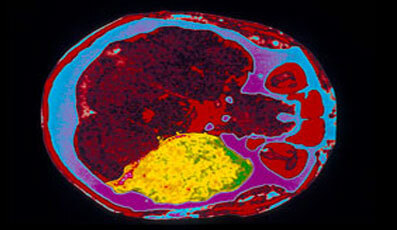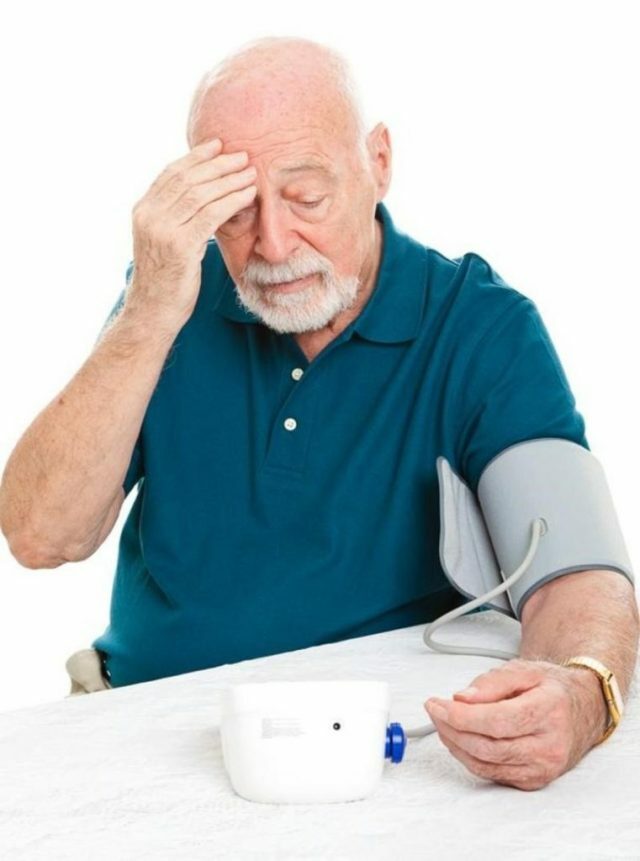What is this - the term itself, brain encephalopathy, serves as a common name( collective) reflecting the severity and consequence of brain damage( decrease in the volume of glial cells and neurons, atrophic processes in the brain, significant functional disorders).
Diagnosed usually by the nature of dystrophic changes manifested - pseudoencephalopathy, cerebropathy or encephalosis, due to acquired or natural non-inflammatory lesions, of which absolutely no one is immune.
It is better to understand what brain encephalopathy will help the etiology of the development of the syndrome.
Contents
- 1 Etiology of development, causes of
- 2 Circulatory brain encephalopathy and other
- 2.1 Symptoms and signs of encephalopathy
- 2.2 Which doctor deals with encephalopathy problems?
- 2.3 Diagnostic Techniques
- 3 Treatment Method for Brain Encephalopathy
- 3.1 Consequences and Prevention
Etiology of Development, Causes of

Encephalopathy as a disease has not been documented in any medical registry, including the WHO classification system.
Encephalopathy of the brain is a syndrome of pathological degenerative changes caused in the cells of the nerve tissues of the brain with a prolonged blood supply disorder that causes oxygen starvation( hypoxia), pathogenic factors or diseases.
Etiology of development is caused by an anomaly of congenital or acquired pathology due to internal or external influences.
Congenital pathology of the syndrome of encephalopathy, this is a consequence of the negative impact on the fetus in different stages of its development. Conditionalities:
- with genetic defects;
- pathology of the development of the central nervous system;
- by hypoxia or birth trauma.
The first signs of can manifest immediately in the postpartum period, or with the passage of time, in the form of characteristic changes. This form of the disease is fraught with serious consequences, often leading to disability.
Timely treatment methods allow to significantly correct violations, due to the high ability of compensatory processes( reversibility) of the child's body.
Acquired encephalopathy is diagnosed more often. The appearance is facilitated by various factors of etiological genesis. In particular, with complicated background autoimmune( systemic) disorders that contribute to the formation of ischemic brain disease.
Despite the many forms of manifestation of encephalopathy, they all have a common developmental mechanism that manifests itself:
- Brain hypoxia, which provokes cerebral circulation, causes disruptions in the functions of the arterial and venous system( reduced blood flow to the brain and difficulty in its outflow);
- The development of hemorrhagic stroke( hemorrhage), which often causes brain encephalopathy in the elderly;
- Adverse effects of toxins affecting the metabolism and composition of nerve tissue structures;
- Acute malignant arterial hypertension, manifested by renal pathology or gestosis( late toxicosis in pregnant women - nephropathy);
- Subsequently, prolonged cardiovascular operations or a consequence of cessation of breathing, with clinical death. All this, violates respiratory functions, circulation and tissue metabolism.
Such reasons for the formation of brain encephalopathy in adults explain the similarity of morphological changes in various forms, manifested:
- by the formation of small necrotic foci;
- diffuse or cerebral atrophy of the brain;
- is the fullness and swelling of the brain and its membranes;
- increased proliferation of glial fibers.
The cause of the development of encephalopathy depends on the severity of the disease and the location of the lesions, the integrity of the vessels of the white plates of the brain substance and the vessels of the gray matter of its cortex, the severity of the circulatory disturbance.
Discirculatory brain encephalopathy and other forms of

Encephalopathy in adults can manifest in a variety of forms and forms.
- Post-traumatic - the consequences of brain injury.
- Toxic - the result of the influence of toxins of different genesis( bacterial, neurotropic).
- The radial form is caused by the action of ionizing factors.
- Encephalopathy of cerebral vessels is the result of chronic vascular lesion.
- Dyscircular is the most common form of the disease.
- Metabolic( hepatic, diabetic, etc.), as a result of violations of internal organs.
Discirculatory brain encephalopathy deserves special attention. It is characterized by a slow progressive development of pathological processes in the system of cerebral blood supply, caused by cerebrovascular disorders.
In turn, manifests itself in four forms:
- venous pathology;
- is hypertensive;
- atherosclerotic;
- mixed.
Sometimes discircular pathology manifests itself in conjunction with hydrocephalus.
Symptoms and signs of encephalopathy

Clinical signs of pathology are diverse, depend on the severity, degree, form of the disease, brain changes of a dystrophic nature.
The earliest symptomatology is manifested:
- Spread across the head with intense pains;
- With noises pulsating in the ears;
- Emotional disorders and inadequate reactions;
- Insomnia( insomnia) and lethargy;
- Constant fatigue and distracted attention;
- Problems with memory.
The gradual development of symptoms is determined by the stage of the pathological process.
1) The compensated first stage is manifested by cerebrosthenic symptoms( emotional lability, increased excitability, insomnia, headaches, dizziness), mental disorders( asthenodepressive and paranoid syndromes).
2) In the subcompensated second stage, there is an exacerbation of symptoms and worsening of the condition. Added signs of coordination disorders and intentional tremor( tremor), symptoms of visual and auditory functions, convulsive epileptiform syndrome( seizures).
3) In the decompensated third, severe stage, there are cerebral disorders due to the symptoms of cerebellar involvement( disorders of coordination movements, suppression of tendon and periosteal reflex functions, pathological changes in the mechanism of maintaining a certain posture).Severe mental disorders are noted.
Signs of extensive damage to the brain structures are manifested by rapid, violent mental symptoms, followed by apathy( with frequent loss of consciousness) - obvious signs of a lung infarction, obstruction of the arteries of the lungs, or stroke.
Which doctor deals with encephalopathy?
If you identify signs of pathological processes, you need to contact a neurologist. In the treatment of pathology, direct involvement is made by specialized specialists, depending on the causes that caused brain disorders.
- If the causative factor is due to atherosclerosis and hypertension - the involvement of the cardiologist is necessary.
- When endocrine pathologies, in particular the effect of diabetes, need consultation and treatment with the endocrinologist.
- It is necessary to address to the hepatologist at the hepatic pathologies, serving as the reason.
- Treatment in a nephrologist is performed with renal failure.
If necessary, surgical interventions, the problem of brain disorders is solved by a neurosurgeon.
Diagnostic Techniques

To determine the causal factors that caused encephalopathy, determine the depth of damage to the brain structures, a number of techniques for instrumental diagnostics are used:
- REG diagnostics( rheoencephalography) - examination of the cerebral vascular system.
- UZGD examination of vascular pathologies( subclavian, vertebral carotid arteries).
- Methods of MRI examination of the brain( angiography, tractography).
- General tests and a study of liver biopsy.
The method of treatment of brain encephalopathy
The protocol of treatment, in each case, is selected individually. It is based on complex therapeutic treatment according to pathological manifestations, severity of expressed symptoms and background disease.
The primary task is to eliminate the cause that caused pathological changes.
Acute and pronounced processes are stopped:
- by methods of mechanical ventilation( artificial ventilation);
- Removal of toxic substances from the body - hemodialysis;
- Purification of blood by hemoperfusion( extracorporeal detoxification).
The treatment of brain encephalopathy with medications is mainly due to the severity of symptoms.
Assign
- anti-inflammatory drugs of steroid hormones and NSAIDs;
- multivitamins - "Aevit", "Alphabet", etc.;
- diuretics medications( diuretics);
- preparations of anticonvulsant action( if necessary) - "Phenobarbital", "Phenytoin".
To improve cellular metabolism, nootropic drugs are prescribed - Paracetam, Cerebrolysin, Pantogam, Noopept and amino acid preparations - glutamine, folic and ascorbic.
To improve cerebral blood flow - "Cavinton", "Tsinarizin", etc.
Accelerate the process of treatment:
- Techniques of manual therapy and acupuncture;
- Physiotherapeutic procedures( electrophoresis, magnetotherapy, ultraviolet radiation, etc.);
- Individually selected exercises exercise therapy.
As a surgical treatment, endovascular methods are used - intravascular operations that eliminate vascular obstruction( vascular stenting, vasodilatation by angioplasty, aortic balloon valvuloplasty).
Stem cell therapy is the most effective method for restoring brain functions. Such a technique activates the process of tissue regeneration and helps restore the functions of damaged brain neurons.
Consequences and prevention of
For each type of encephalopathy, the consequences are individual and correspond to the main symptoms. The most severe consequences are noted in the toxic form of the disease, when severe brain damage is irreversible. To frequent consequences it is possible to carry:
- neuropsychic disorders;
- development of hypertensive hydrocephalic syndrome;
- is a disorder of nervous regulation in the human body.
An important factor in prevention is the stability of the state of the psyche. This is facilitated by classes without physical overstrain, pleasant, quiet music and quiet movies without aggression.
Calming the vascular system is helped by soothing bath procedures with the addition of sea salt. Improve circulation - contrast shower in the morning, long walks.
To save health, a balanced diet that excludes ration from fried, salty and fatty foods helps. Exclude from its measured life the factors of intoxication - cigarettes, alcohol and drugs.



